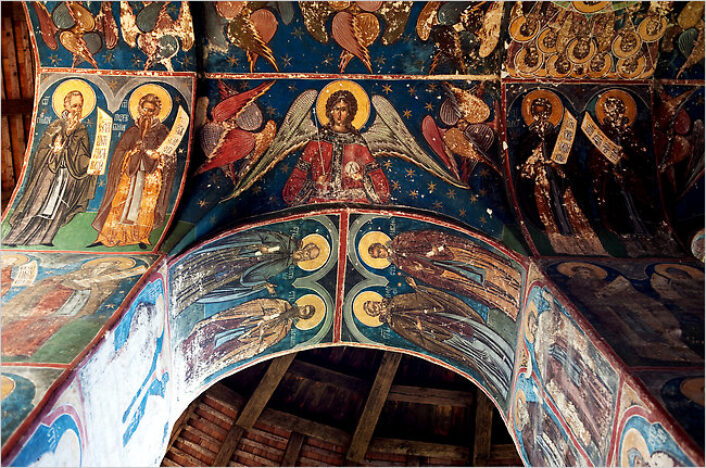Culture
Romanian monasteries unveiled
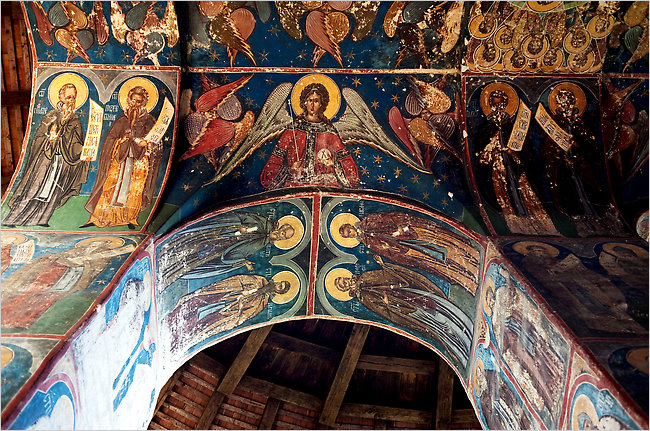
The Monastery of Humor, in the village of Manastirea Humorului, was painted in 1535 with a dominance of brownish-red colors for its exterior frescoes. After a quiet period, the Monastery of Humor was re-established as a monastic community in 1991.
Image courtesy of: The New York Times, photographed by: Cristian Movila
Almost five and a half centuries ago, the Moldavian prince Stephen the Great decided he needed to mark his victories in grand style. His idea was to build a monastery and cover the walls with the traditional, colorful artisan work that was popular during those times. As his victories continued, more and more adorned monasteries were built.
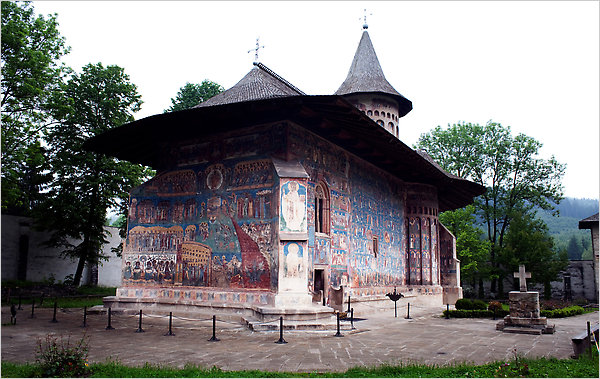
The Monastery of Voronet dates back to 1488. The distinctive blue-gray shade is what gives the name to the color… Voronet blue.
Image courtesy of: The New York Times, photographed by: Cristian Movila
Forty six victories translated to eight amazing monasteries. This unprecedented building spree occurred within a forested area in the Bucovina region of Romania. Luckily, after Stephen the Great passed away, this became a family tradition… his son and successor, Petru Rares, continued what his father started. Victories against invaders are what resulted in commissioning these buildings.
Many of the mural-covered monasteries survived astonishingly well through the centuries. These “war trophies” withstood the summer sun and winter winds in the remote region. It is important to note that Stephen the Great increased the security of his “kingdom” by building an alliance with Vlad the Impaler… or Dracula.
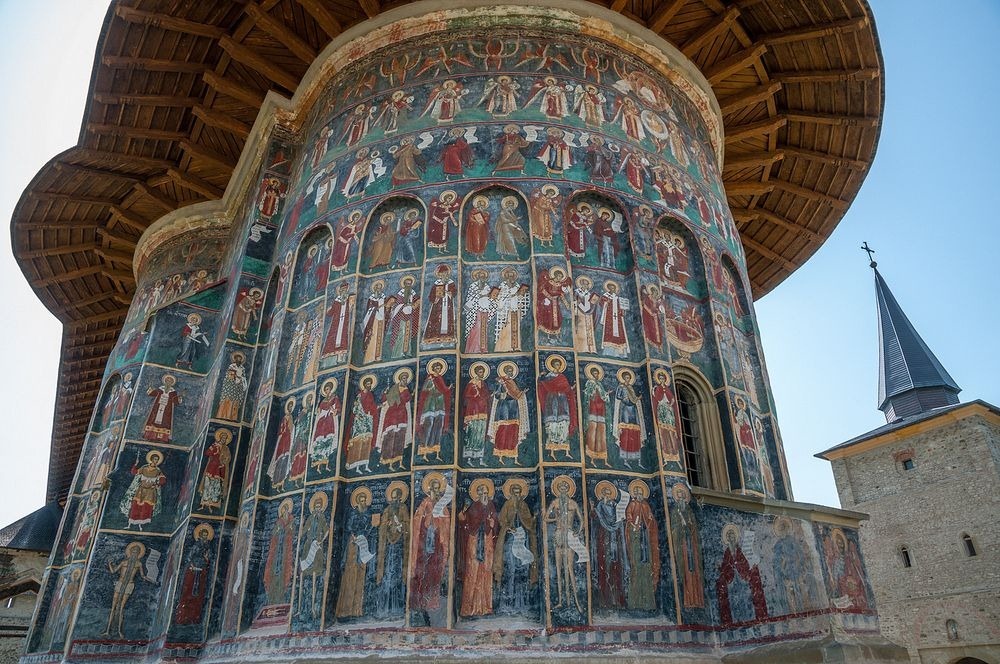
Monastery of Sucevita was painted by a team of local artists towards the end of the 16th century. The paintings portray a variety of traditional religious themes, and also “newer” themes such as forty detailed scenes from the life of Moses.
Image courtesy of: Amusing Planet
The eight surviving monasteries are now called the Churches of Moldavia. This UNESCO World Heritage site has some of the most well-maintained, most graphic paintings from the past 500 years.
The colors of the Churches of Moldavia vary drastically and each monastery’s color tells a different story. Luckily, the area has always been abundant in minerals. From these crushed minerals, semi-precious stones, and rare clays, pigments were expertly derived.
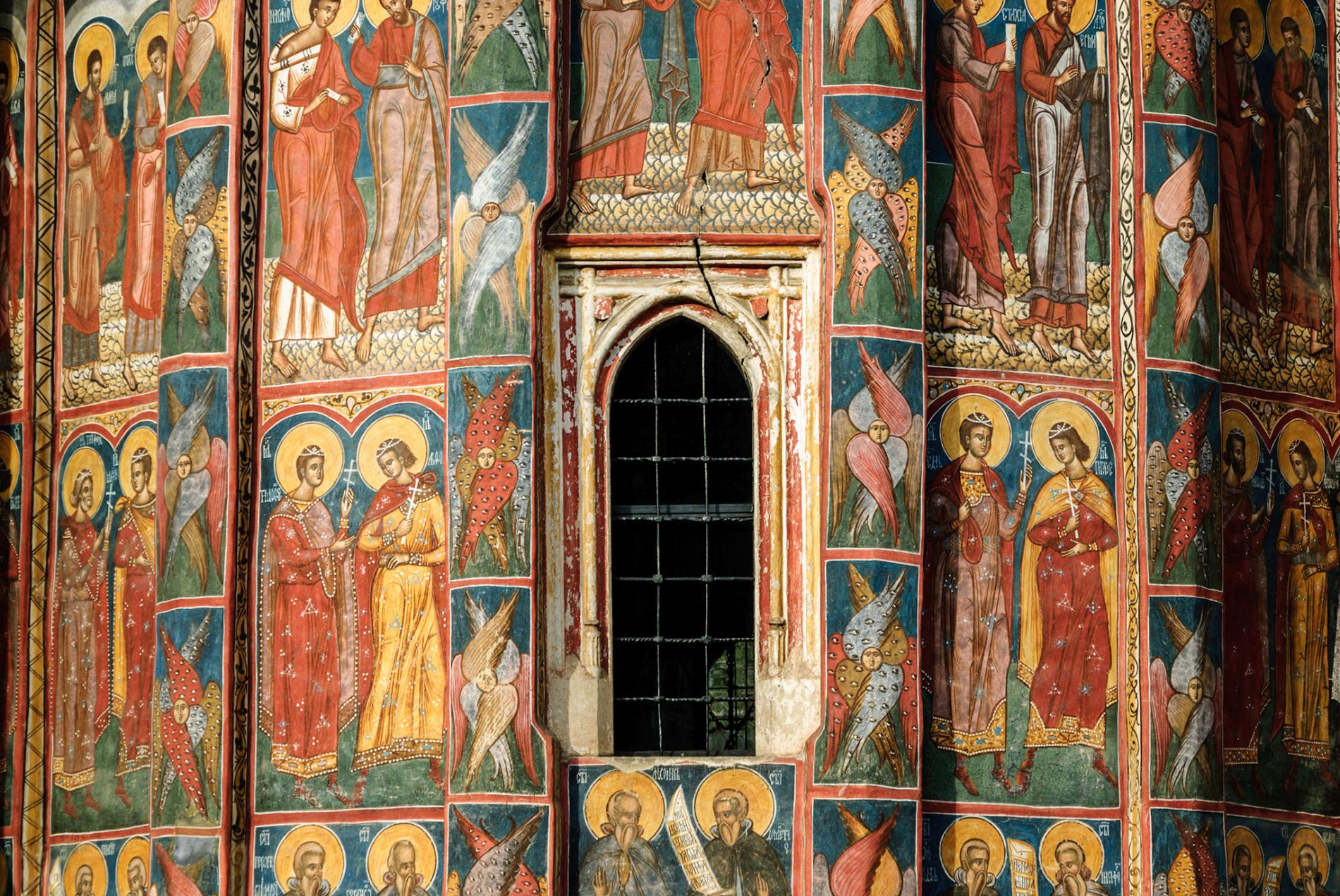
Inside the monasteries, age-old traditions remain. If you’re lucky enough to visit and wander throughout the church grounds, you may encounter nuns and monks who announce prayer time by beating a hammer on a wooden board. This tradition dates back centuries and is in honor of the time when occupiers banned the ringing of the bells.
Image courtesy of: National Geographic, photographed by: Jorge Fernandez
The eight Byzantine-era monasteries are best known for their beautiful, colorful frescos. The walls are full of murals which are painted both on the inside and outside. Each monastery is completely distinctive in color, and in which Bible story it is retelling.
Through the frescoes of the many saints and prophets, scenes from the life of Jesus, and stories of man’s beginnings and of his life after death… the monasteries helped teach the region’s illiterate peasants religious themes and stories of God.
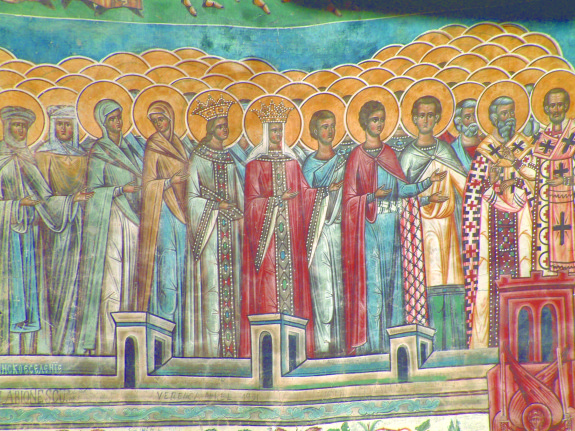
Inside the Voronet Monastery, each and every centimeter is covered with frescoes. The murals illustrate the “Annunciation,” the “Last Judgment,” and “the Tree of Jesse” which transcribe Christ’s genealogy and also show a parade of saints and ancient Greek philosophers.
Dubbed the “Sistine Chapel of the Orient”, the Voronet Monastery’s “Last Judgement” is especially well-preserved… and certainly worth a visit!
Image courtesy of: Everett Potter’s Travel Report
Each of the eight monasteries has a unique story. Voronet, for example, remained a monastery until the 18th century when Hapsburg occupiers chased out the monks. From then until 1991, the building remained uninhabited… until a community of nuns dedicated to the Order of St. George took up residence there.
Native Romanians feel most connected to the Monastery of Putna. The church took three years to erect, 1466-1469, as the final resting place of this ambitious prince. This monastery is where people are able to worship at Stephen the Great’s tomb. The prince was canonized as Stephen the Great and Holy by the Romanian Orthodox Church.
